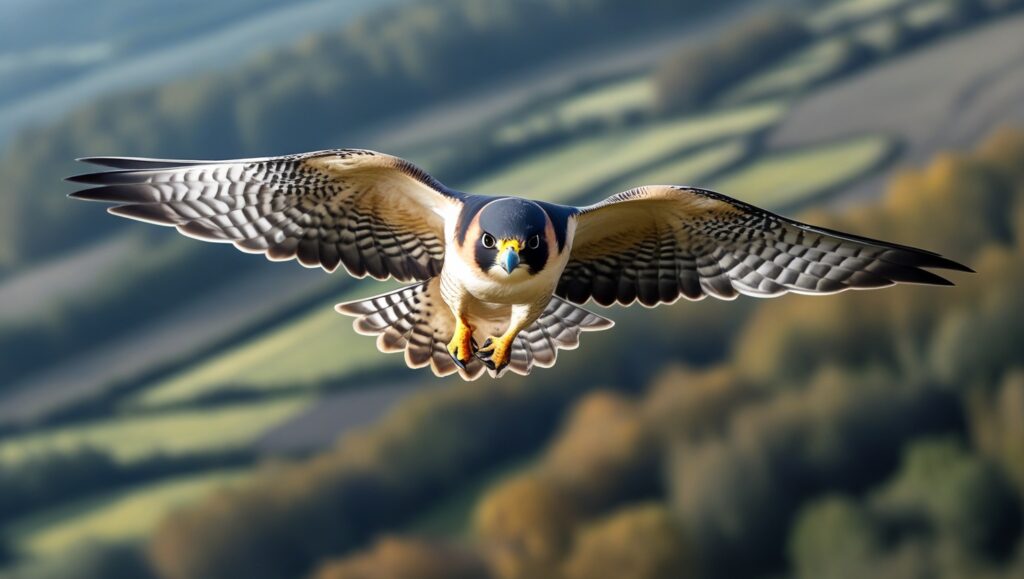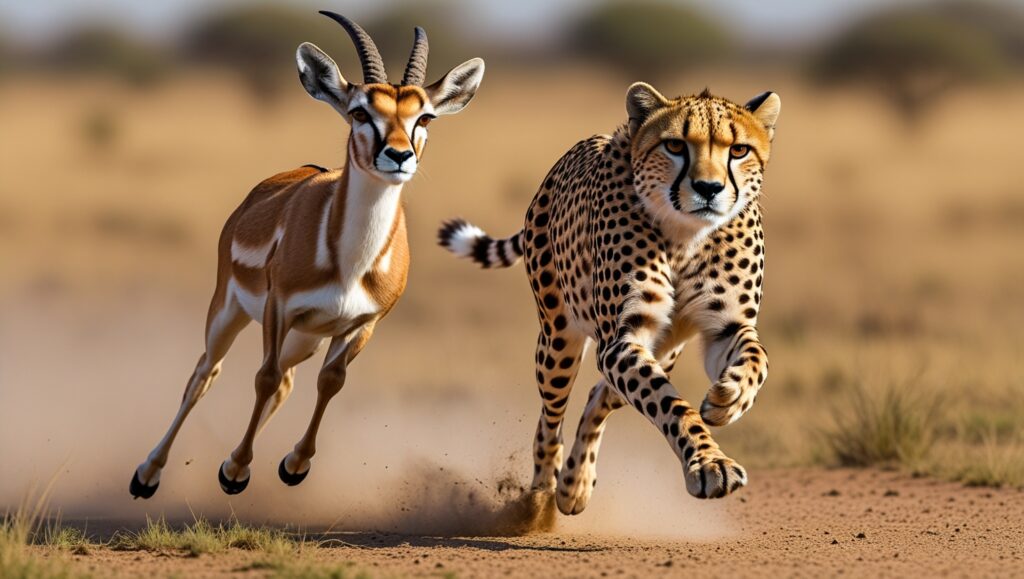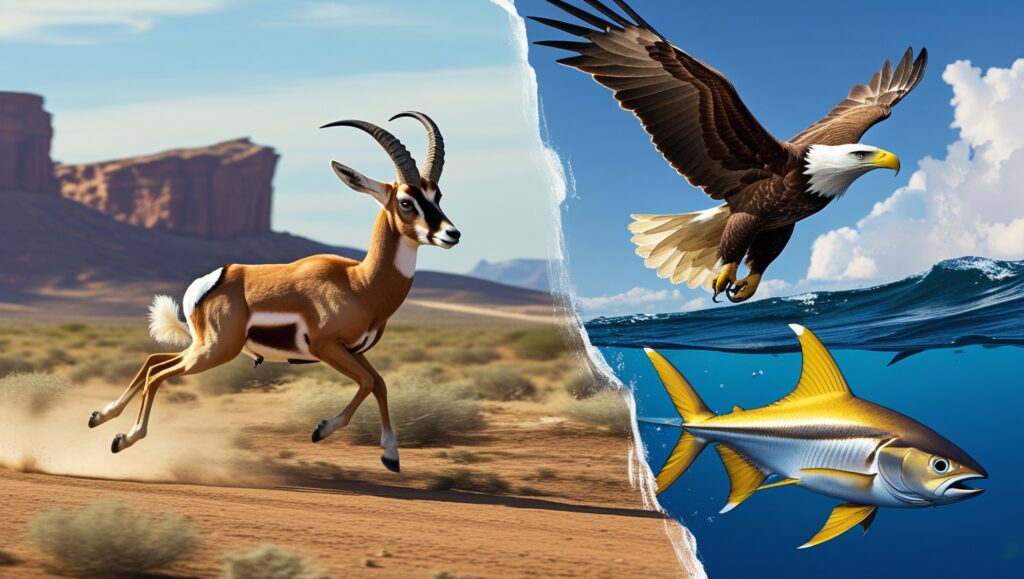Have you ever wondered which animals hold the title for being the fastest on Earth? From blazing land speeds to lightning-quick dives and record-breaking swims, nature is full of incredible speedsters. In this article, we’ll explore the fastest animals in the three major domains of life: land, sea, and air. Get ready to be amazed by their jaw-dropping abilities and fun facts that might make you see these animals in a whole new light!
The Fastest on Land: The Cheetah
When it comes to speed on land, the cheetah takes the crown. This sleek, spotted cat can reach speeds of up to 70 miles per hour (113 km/h) in short bursts, making it the fastest land animal in the world. What’s even more impressive is how quickly a cheetah can accelerate—it can go from 0 to 60 mph in just three seconds, rivaling some of the fastest sports cars.
Fun Fact: A cheetah’s claws don’t retract like those of other cats. This helps them grip the ground, much like running shoes with spikes.
But cheetahs don’t just rely on speed to catch their prey. Their long tails act as rudders, helping them make sharp turns while chasing down antelope or hares. Unfortunately, their incredible speed comes at a cost: cheetahs can only maintain their top speeds for about 20 to 30 seconds before they overheat.
The Fastest in the Air: The Peregrine Falcon

If the cheetah is the speed king on land, the peregrine falcon is the ruler of the skies. This bird can reach speeds of over 240 miles per hour (386 km/h) during a hunting dive, known as a “stoop.” That’s faster than a Formula One car! The peregrine’s aerodynamic body and powerful wings make it the ultimate aerial predator.
Fun Fact: Peregrine falcons have a special feature in their nostrils that slows down the airflow when they dive, preventing them from damaging their lungs.
Peregrine falcons don’t just rely on their speed; they also have excellent eyesight. Their vision is so sharp that they can spot prey from more than a mile away. Once they lock onto their target, there’s little chance of escape.
The Fastest in the Sea: The Black Marlin

Underwater, the black marlin is the reigning champion. This fish can swim at speeds of up to 82 miles per hour (132 km/h), making it the fastest swimmer in the ocean. With its sleek, torpedo-shaped body and long, pointed bill, the black marlin is built for speed.
Fun Fact: Black marlins can leap out of the water while swimming at high speeds. These acrobatic jumps help them evade predators and surprise prey.
Unlike animals on land or in the air, speed in water is much harder to achieve because of the resistance of the water. This makes the black marlin’s speed even more remarkable. They often use their incredible speed to hunt smaller fish like mackerel and tuna.
Why Speed Matters in Nature

In the wild, speed isn’t just about being fast for the sake of it—it’s a matter of survival. Predators rely on speed to catch their next meal, while prey animals often depend on it to escape danger. For example, while the cheetah is fast, its prey, such as the gazelle, is also incredibly agile and can make quick, unpredictable movements to evade capture.
Fun Fact: The fastest insect is the horsefly, which can reach speeds of up to 90 miles per hour (145 km/h) during flight. Imagine trying to swat that!
Other Speedy Animals Worth Mentioning

While cheetahs, peregrine falcons, and black marlins are record-holders, other animals deserve a mention for their speed:
- Pronghorn Antelope: The second-fastest land animal, capable of running up to 55 mph (89 km/h) for long distances.
- Golden Eagle: Although not as fast as the peregrine falcon, this bird can dive at speeds of up to 150 mph (241 km/h).
- Sailfish: A close competitor to the black marlin, this fish can swim at speeds of around 68 mph (110 km/h).
Fun Fact: Did you know that the common house cat can run up to 30 miles per hour (48 km/h)? That’s faster than Usain Bolt, the fastest human in the world!
What About Humans?
Speaking of humans, the fastest recorded speed for a person is 27.8 mph (44.7 km/h), achieved by sprinter Usain Bolt during the 100-meter dash. While that’s impressive for a human, it’s nowhere near the speeds achieved by animals.
A World of Speed
Nature is full of incredible adaptations, and speed is one of the most fascinating. Whether it’s a cheetah sprinting across the savannah, a peregrine falcon diving through the sky, or a black marlin slicing through the ocean, these animals show us just how extraordinary life on Earth can be. Next time you’re out in nature or watching a documentary, take a moment to appreciate these speedy marvels. They’re not just fast; they’re masters of their domains.
So, which of these animals would you like to see in action? Let us know in the comments!



